Ticketing Service Compromised
Recent information breach has cost students with card fraud
By CARLIN REYEN Sun Staff Writer
For many Cornell students, attending ticketed events such as concerts and sporting events can be a source of joy and stress relief during taxing moments of the semester. In late February, though, AudienceView, the third-party ticketing vendor the University uses, experienced a breach of student personal information.
The breach put a damper on the enjoyment of events for many affected students.

“It was 10 minutes before my physics prelim, and I saw charges up to $5,000 on my card after I checked my balance. I immediately panicked and could not do much about it until after my prelim exam,” said S.C. ’24, a student in the College of Agriculture and Life Sciences who wished to remain anonymous due to an ongoing case with the police.
S.C. had previously purchased tickets to the Cornell Fashion Collective fashion show to support a friend.
Ella Bormet ’24 noticed recent card fraud after a series of charges that she had not made, only one of which has already been reimbursed by her bank.
“I didn’t really think anything of it,” Bormet said. “Two days later, my mom texted me and said, ‘I didn’t know you sent your Uno cards to our house. Can I mail them to you?’ It was really funny. I [said] ‘What? I didn’t order that.’ … So that’s kind of how I actually found out.”
For some, the matter felt more serious, as the victims have no control over the dispute and investigation process.
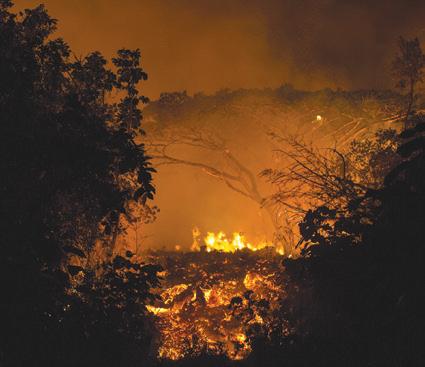
S.C. said they experienced four fraudulent charges in total on their debit card, with two as purchases at OfficeDepot and two sending almost $4,000 to a random recipient.
“There is no guarantee that I will get my money back after my dispute,” S.C. said. “Additionally, the investigation will take more than 30 days, which is outright ridiculous for something I had no control of, and this is the case for many students right now.”
In an email sent to some Cornell students who had previously purchased tickets through their platform, AudienceView alerted students to the possibility of a data breach.
“On Feb. 21, AudienceView discovered suspicious activity within our Campus product which is embedded into the website of Cornell Big Red Ticket. We immediately initiated an investigation into the nature and scope of the event and determined that our Campus product was impacted with malware,” the company wrote in the email. “The investigation determined that between Feb. 17, and Feb. 21, certain individuals’ information may have been subject to unauthorized access and acquisition. In response, we moved quickly to remove the malware from our Campus product and reviewed the potentially impacted data in order to identify what information is contained therein and to whom that information relates.”
Bormet said she did not receive such an email.
Personal information such as student names, billing and shipping addresses, email addresses and payment information may have been affected, according to the company.
In an email to The Sun, Samantha Park, assistant director of Athletics, Ticketing and Camps at the University, wrote that AudienceView has since suspended all sales on their platform due to further attempted security breaches of its platform.
“Sales via our site will remain unavailable while AudienceView conducts an investigation,” Park wrote.
“[On Wednesday,] our office will be releasing information on securing admission for this weekend’s men’s basketball game.”
Cornell is not the only university currently experiencing this issue. Virginia Tech, SUNY Oswego, Middlebury College and Kent State University are among the other colleges where student information was recently breached through use of AudienceView’s third-party ticketing service.
S.C. said the incident has threatened their sense of security.
“I’m basically without a card right now,” S.C. said, “but I feel unsafe using my card and account info until the investigation is over.”
By AIMÉE EICHER Sun Assistant News Editor

From leading a Cornell research lab to being featured in The New York Times, Prof. Robert Howarth, ecology and evolutionary biology, has spent his career studying and educating the public on climate change.
Howarth began studying the environment, ecosystems and biology early in his academic career. He earned a B.A. from Amherst College before going on to earn a Ph.D. from Massachusetts Institute of Technology and Woods Hole Oceanographic Institution. Howarth reflected upon an undergraduate internship at Brookhaven National Laboratory, an experience that helped shape his further career path.
“When I was an undergraduate, I didn't know if I wanted to be a scientist or if I wanted to be an environmental lawyer or a policy person — someone out there making a real difference,” Howarth said. “[At Brookhaven Lab] I worked with a really fan tastic group. I was doing the same kind of work that I've ended up doing for my career but also heavily engaged in issues such as how deforestation in the Amazon was affecting climate change.”
Howarth’s career at Cornell has extended for over three
decades. He taught in the College of Arts and Sciences for eight years, before the College of Agriculture and Life Sciences asked him to accept an endowed professorship as the David R. Atkinson professor of ecology and evolutionary biology. Currently, Howarth teaches Ecology and Evolutionary Biology 1610: Introductory Biology: Ecology and the Environment.
Upon arriving at the University, Howarth began his research, co-leading a lab with Roxanne Marino Ph.D. ’01 — whom Howarth referred to as the lab’s chemistry expert. Howarth said that he has worked with Marino for about 40 years, even before beginning his position at Cornell.

Several other faculty members are part of the lab, including Dennis Swaney, the lab’s coordinator of modeling and Melanie Hayn ’04 M.S. ’12 Ph.D. ’23, who works remotely from the Ecosystems Center at the Marine Biological Laboratory in Woods Hole,
Spanish Debate Team to Compete in Colombia
By ISABELA WILSON
Sun Contributor
The Sociedad de Debate en Español Cornell, the University’s Spanish debate team, is preparing to showcase its skills on an international stage at an upcoming tournament at Universidad del Rosario in Bogotá, Colombia.
SDEC is a sub-organization of the Speech and Debate Program under the School of Industrial and Labor Relations. The team is the host of Campeonato Hispanohablante Interuniversitario de Debate y
Oratoria, an annual, inter-university Hispanic-speaking debate and oratory championship. They are also a regular participant in the World Universities Debating Championship, the world’s largest debate tournament, which includes English and Spanish debate competitions abroad.
SDEC has traveled to many Spanish-speaking countries for tournaments, including Mexico, Guatemala and Peru, although the COVID-19 pandemic inhibited the team from participating in competitions abroad for two years. Last year, the team resumed traveling interna-
tionally, competing in Spain over the summer and in Mexico over the Thanksgiving break.
This year, they will compete in the Torneo Rosarista de Debate, which will take place from March 18 to March 20 and will feature teams from other schools in Spanish-speaking countries.
The SDEC students traveling to Colombia come from a diverse array of backgrounds. Pedro Pontes Garcia ’26, a student from Spain, joined SDEC to speak his native language in an academic setting.

The
Daily Sun INDEPENDENT SINCE 1880 Vol. 141, No 39 THURSDAY, MARCH 2, 2023 n ITHACA, NEW YORK 8 Pages – Free Cloudy HIGH: 41º LOW: 31º A Meal at Zocalo Jimmy Cawley '25 explores the menu at Zocalo, a hidden gem in the Ithaca Mall. | Page 5 Dining Weather Measuring Volcanoes Cornell researchers have developed new methods to calculate magma depth in volcanoes. | Page 8 Science
Recruitment
Corne¬
Spring
Join The Sun Professor
Howarth Advances Climate
Interested in joining If so, email managing-editor@ cornellsun.com.
Robert
Knowledge
“There is no guarantee that I will get my money back after my dispute. ... This is the case for many students right now.”
S.C. ’24
See PROF page 3
COURTESY OF CORNELL UNIVERSITY
Dashing debaters | Cornell's Spanish debate team is preparing for an international tournament in Colombia.
DEBATE
COURTESY OF SOCIEDAD DE DEBATE EN ESPAÑOL CORNELL
See
page 3
Carlin Reyen can be reached at creyen@cornellsun.com.
494 Uris Hall
Recycling the 1990s in Chinese Digital Media With Shiqi Lin
1 p.m., 374 Rockefeller Hall
Autism Social Group
4 p.m. - 5:30 p.m., Virtual Event
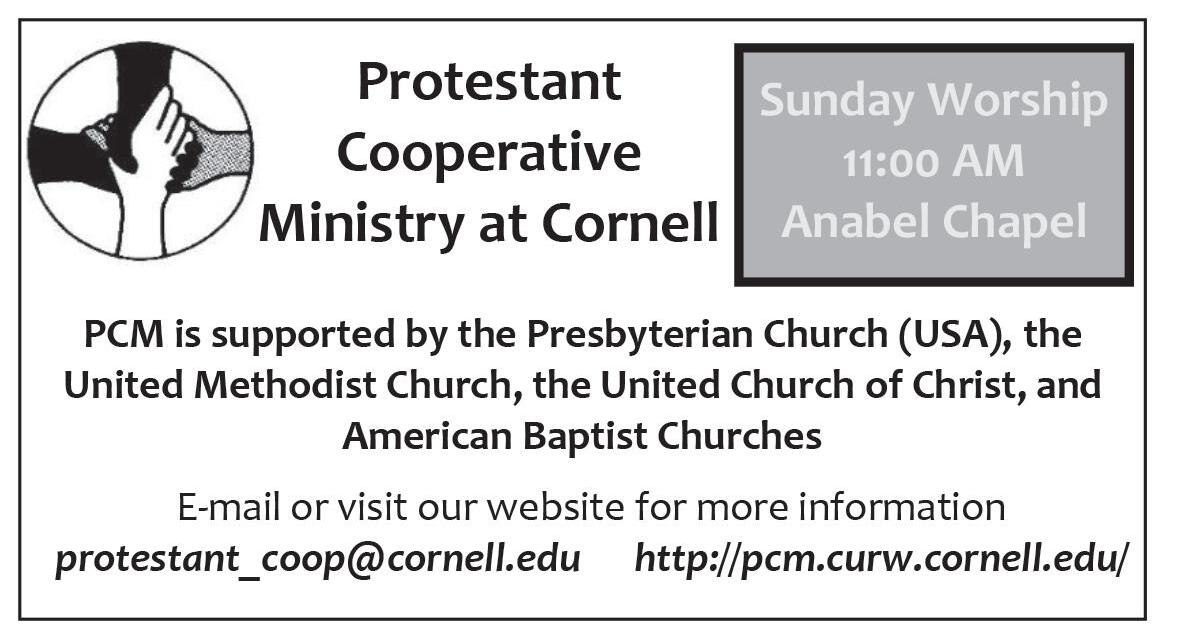
Character Trouble With John Doris
4 p.m. - 5 p.m., 160 Mann Library
Interrogating Catalytic Reactions Using Kinetic Isotope Effects
With Mathew Vetticatt
4 p.m. - 5 p.m., 119 Baker Lab
Material-Enabled Technologies for Soft and Fluidic Robots
With Daniel Preston
4 p.m. - 5 p.m., B14 Hollister Hall
Music and Sound Studies Colloquium: Decolonial Regietheater With Dylan Robinson
4:30 p.m. - 6 p.m., Virtual Event

Reading by Victoria Chang
5 p.m., G70 Klarman Hall

Recalling CLR James: Decolonization, Socialism and the Good Life With Gary Wilder
5 p.m. - 6:30 p.m., G08 Uris Hall
Death and Dying in the Diaspora With Allan Isaac
6 p.m., G64 Goldwin Smith Hall
Cremona Quartet
8 p.m., Bailey Hall
Institute for Comparative Modernities Symposium: Reparations for Colonization/Carbonization
10 a.m. - 5 p.m., A.D. White House
From College to Beyond: Law School
Noon - 1 p.m., 429 Rockefeller Hall
Department of Psychology Colloquium Series With Danielle Dickens
12:20 p.m., 115 Rockefeller Hall
Composers Forum: Mendi and Keith Obadike, “Sound, Structures and Site”
1:30 p.m., 316 Lincoln Hall
Biomedical Engineering 7900 Speaker Series With David Odde
2:45 p.m. - 3:45 p.m., 226 Weill Hall
Plantation Liberalism: Personhood and Property Between Philippine Mindanao and the Black Atlantic
3 p.m. - 4:30 p.m., 160 Mann Library
TGIF (Tell Grads It’s Friday)
4:30 p.m. - 7 p.m., Big Red Barn
Empowerment Through Music: Master Class With Reginald Mobley
6 p.m., Barnes Hall
2 The Cornell Daily Sun | Tursday, March 2, 2023 Daybook ALL DEPARTMENTS (607) 273-3606 Editor in Chief Vee Cipperman ’23 The Corne¬ Daily Sun INDEPENDENT SINCE 1880 Postal Information: The Cornell Daily Sun (USPS 132680 ISSN 1095-8169) is published by the Cornell Daily Sun, a New York corporation, 139 W. State St., Ithaca, N.Y. 14850. The Sun is published Tuesday and Thursday during this spring semester, and every weekday online. Four special issues — one for Cornell Days in April, one for seniors in May, one for alumni in June and one for incoming freshmen in July — make for a total of 75 issues this academic year. Subscriptions are: $84.00 for fall term, $86.00 for spring term and $170.00 for both terms if paid in advance. Standard postage paid at Ithaca, New York. Postmaster: Send address changes to The Cornell Daily Sun, 139 W. State St., Ithaca, N.Y. 14850. Business: For questions regarding advertising, classifeds, subscriptions or delivery problems, please call from 9 a.m. to 5 p.m., Monday-Friday. News: To report breaking news or story ideas, please call after 5 p.m., SundayTursday. SEND A FAX (607) 273-0746 THE SUN ONLINE www.cornellsun.com E-MAIL sunmailbox@cornellsun.com Business Manager Serena Huang ’24 139 W. State Street, Ithaca, N.Y. VISIT THE OFFICE Daybook Thursday, March 2, 2023 A LISTING OF FREE CAMPUS EVENTS Today Tomorrow Retirement and Beyond: Endowed Employees 10 a.m., Virtual Event Virtual Reality and Immersive Learning 10 a.m. - 11:30 a.m., 700 Bethe Auditorium Clark Hall
Economics Workshop With
a.m.
p.m.,
Public
Prof. Milena Djourelova, economics 11:15
- 12:45
Indian Dance Groups Showcase Culture, Talent
Sitara, Bhangra, Big Red Raas among student teams performing, attending competitions
By CAROLINE MICHAILOFF Sun Staff Writer
Cornell has supported multiple Indian dance groups — the biggest three being Sitara, Bhangra and Big Red Raas for over 20 years, according to the Cornell Dancers’ Alliance.

Cornell Sitara infuses Bollywood dance with hip hop, Indian classical and contemporary. Cornell Bhangra promotes awareness of Punjabi folk dance and culture in the Punjabi community and across the nation. Big Red Raas features garba-raas, a traditional dance from Gujarat, India.
All three dance teams compete regionally as well as nationally, with the Raas team advancing to the national championship, Raas All-Stars, last year.
Cornell Sitara holds showcases every spring. At this year’s showcase on March 26, the team will perform their competition cut and other cuts choreographed by various team members, along with guest acts by other dance teams on campus, such as the other Indian Dance Teams.
Cornell Sitara holds workshops and tryouts in the fall to recruit new members. They perform mainly at South Asian events such as Diya Jale and Mock Shaadi, as well as other on-campus events such as Relay for Life and Carnelian Gala.
Anika Anvekar ’23, Cornell Sitara’s captain, told The Sun in an email that she joined Cornell Sitara because she wanted to continue dancing as she did in high school. Once she met
the Sitara members and attended a workshop, she knew it was the right team for her.
“Sitara felt like the perfect team for me because I loved how many different styles of dance we do as well as being able to find my place and connect with the South Asian community here at Cornell,” Avenkar said.
Sitara’s most recent competition was the Midwest Dhamaka in Cincinnati.
“This was our first time competing at a Legends Partner Competition. While we did not place, we couldn’t be happier to have shared the stage with such talented teams and are so proud to have been able to take part in such a competition,” Anvekar said. “We were only able to afford to go to one competition this year, but we hope to attend two or more competitions next year.”
Aiming to promote awareness for Punjabi folk dance, Cornell Bhangra holds open workshops in the beginning of the year for people to try Bhangra and meet their team. Throughout the year they hold various on-campus performances at events and showcases such as Clubfest, Fall Step and Diya Jale.
Their biggest event of the year is Pao Bhangra, which will occur on April 15 this year.
“Pao Bhangra is Cornell Bhangra’s annual bhangra exhibition which aims to share South Asian culture with the larger community and promote the aspect of bhangra we love the
Students Travel Abroad for Debate
DEBATE
Continued from page 1
“It’s very easy to lose connection to your native language whenever you leave your country,” Pontes Garcia said. “So, even though it might be easier to use it in casual conversation, there’s no context [in the U.S.] where you can speak it in a formal, academic way.”
Ellie Kagan ’26 is not a native Spanish speaker, though she took Spanish classes in high school. She joined the team to improve her Spanish oratory skills.
“I [joined Spanish debate] because Spanish was one of my favorite classes in high school, and I think it’s so important to learn several different languages,” Kagan said. “I think debate in general is so great, because it will help you with public speaking skills, thinking on the spot and considering alternative perspectives.”
SDEC team members are optimistic about their preparation for the competition. Ethan Lodge ’23, internal vice president of the team, has been part of SDEC since his freshman year and is excited to see new team members compete.
“We have a substantial [number] of people who are competing for the first time, many of whom are freshmen,” Lodge said. “We have consistently been competing among ourselves, so this will be a learning experience for them.”
Kagan expressed excitement to debate with students from different countries.
“Each of our debates are within [the SDEC]. To be actually exposed to Spanish debaters from different countries will be so amazing in terms of [our] growth,” Kagan said.
Pontes Garcia reiterated Kagan’s point, expressing his enthusiasm for learning the nuances of the Spanish language from a debate perspective.
“I’m very excited to get to know the Spanishspeaking debate circuit because there are some strong differences between debate cultures and the way people interact with each other in terms of debate,” Pontes Garcia said.

For many SDEC team members, the upcoming tournament will be their first opportunity to visit Colombia.
“[Universidad del Rosario] is one of the best universities in Colombia, so I’m excited to see what the campus is like,” Lodge said.
Bally Warren ’26, external vice president of the team, said she is eager to learn about Colombian culture.
“[We’re] going to be exposed to so many different dialects and people,” Warren said. “It’s great that people are getting exposure to these various perspectives that Cornell wants us to be a part of and see.”
most — the joy of performing,” said Amulya Puttaraju ’24, one of Pao’s co-presidents. “Pao has always been called the ‘bhangra olympics,’ and we like to make this exhibition a fun, stress-free event for everyone that performs.”
To continue reading this article, please visit www.cornellsun. com.
Prof. Devotes Career To Climate Research
Continued from page 1
Visiting fellow Tom Butler, manager of the Ithaca precipitation chemistry site for the Cary Institute of Ecosystem Studies, works for the lab as well.
“The thing that ties us together is [that], within earth system science, one of our subdisciplines is biogeochemistry, which is the interplay of how the chemistry of the environment affects life on Earth [and] ecological function, but also how biology affects environmental chemistry — including climate change,” Howarth said.
The Howarth-Marino lab has studied various environmental, biological and ecological topics, including methane emissions from oil and gas, the impact of nitrogen pollution on aquatic ecosystems, harmful algal blooms and how climate, agriculture and urbanism affect nutrient fluxes in major rivers around the world.
Howarth expressed appreciation for the wide range of research projects in which he has participated.
“One of the things I’ve valued hugely over what we’ve been able to do is [that] we do work on a large number of different topics that can change over time. If you get bored with something or frustrated, we’ve been able to switch and move on to other topics,” Howarth said. “If I had to narrow down and pick one topic I spent my life working on, I think I would have been bored to tears decades ago.”
One of Howarth’s most notable research projects is a 2011 paper on the methane emissions of natural gas, which he co-published with Prof. Anthony Ingraffea, civil and environmental engineering. Howarth first gained interest in the topic upon returning home from a sabbatical in Paris during
the spring of 2009.
“When I came home, everyone — students, people in the community, everyone across New York state — was really upset about the fact that the oil and gas industry was talking about coming into New York State,” Howarth said.
Howarth explained that President George H.W. Bush and President Barack Obama, the two U.S. presidents during the time of natural gas’s rising popularity, supported the development of the energy source, emphasizing that natural gas produced fewer carbon dioxide emissions than fossil fuels.
“While that’s true that carbon dioxide emissions go down [with natural gas], there’s a substantial amount of methane emitted from it,” Howarth said, recounting his response to the discourse surrounding natural gas at the time. “It could [maybe] be that it’d be worse for the climate than using coal.”
Howarth and Ingraffea embarked on their research project, delving into the potential unknown consequences of widespread natural gas use. Howarth predicted that news outlets would be interested in covering the paper’s release, citing the study’s novel research question and results.
Several weeks before the paper was published, Howarth contacted The New York Times about running an exclusive — the paper would be released to the Times several weeks in advance, allowing the newspaper to publish a feature before any other news outlet.
To continue reading this article, please visit www. cornellsun.com.
The Cornell Daily Sun | Tursday, March 2, 2023 3 News
PROF
Showtime | Cornell Bhangra performs at Clubfest in Barton Hall on Feb. 5.
JULIA NAGEL / SUN PHOTOGRAPHY EDITOR
Students talk and study in the newly renovated Atrium Café in Sage Hall.
JULIA NAGEL / SUN PHOTOGRAPHY EDITOR
Café Chat
Caroline Michailof can be reached at cmichailof@cornellsun.com.
Isabela Wilson can be reached at ivw6@cornell.edu.
Aimée Eicher can be reached at aeicher@cornellsun.com.




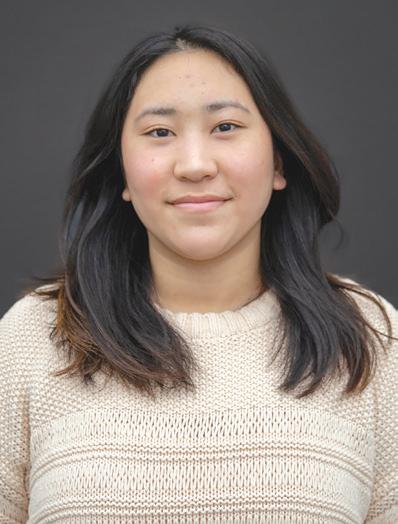










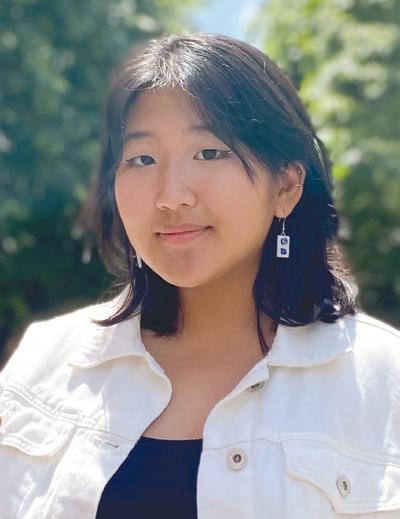
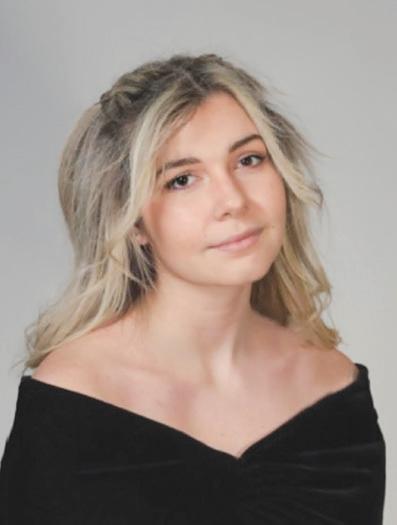
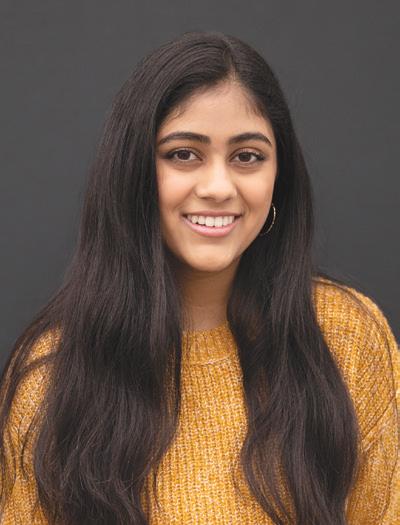


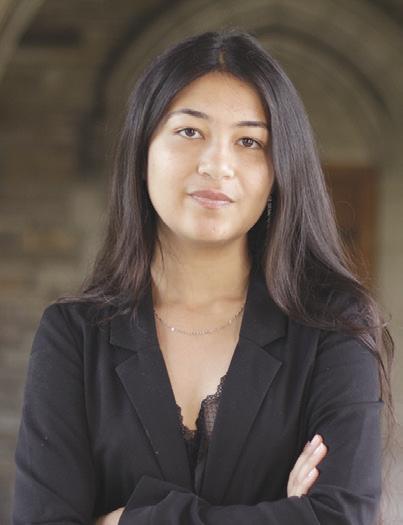







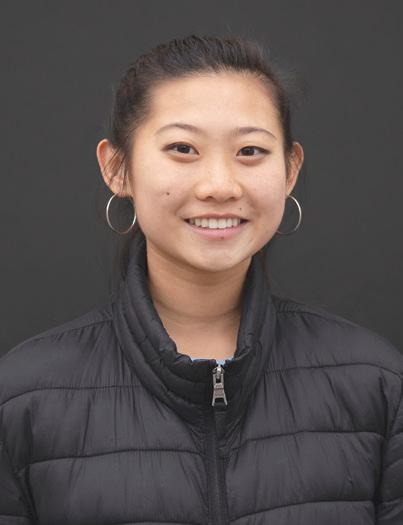



4 The Cornell Daily Sun | Tursday, March 2, 2023 140th Editorial Board HANNAH ROSENBERG Senior Editor 140th Edi torial Boa rd The Corne¬ Daily Sun VEE CIPPERMAN Editor in Chief ANGELA BUNAY Managing Editor EMMA LEYNSE Associate Editor SURITA BASU Asst. Managing Editor ESTEE YI News Editor JOHN COLIE Arts & Culture Editor K ATHERINE YAO Opinion Editor SOFIA RUBINSON News Editor NAOMI K OH Asst. Web Editor K AYLA RIGGS City Editor TENZIN K UNSANG Science Editor K ATRIEN DE WAARD Production Editor AARON SNYDER Sports Editor MEHER BHATIA Science Editor JULIA NAGEL Photography Editor ANDIE K IM Multimedia Editor SARAH YOUNG Asst. News Editor ADITI HUK ERIK AR Asst. Arts & Culture Editor AIMÉE EICHER Asst. News Editor JIWOOK JUNG Asst. News Editor PAREESAY AFZAL Asst. News Editor JASON WU Asst. Photography Editor RUTH ABRAHAM Asst. Sports Editor JYOTHSNA BOLLEDDULA Senior Editor GABRIELLA PACITTO Asst. Sports Editor K EVIN CHENG Newsletter Editor DEVAN FLORES Web Editor SERENA HUANG Business Manager TRACY ZENG Advertising Manager ELI PALLRAND News Editor DANIELA WISE-ROJAS Dining Editor NIHAR HEDGE Asst. Arts & Culture Editor DANIEL BERNSTEIN Senior Editor GRAYSON RUHL Asst. Sports Editor CLAIRE LI Asst. Photography Editor Not Pictured MADELINE ROSENBERG Senior Editor
Ode to Zocalo
A Diamond Amidst the Rubble of the Ithaca Mall
By Jimmy Cawley Sun Staff Writer

Desolate, depressing and deprived of customers are just three adjectives to describe the current state of the Ithaca Mall. With the rise of internet transactions, the Ithaca Mall slowly began its decline from mediocrity into a full-fledged embarrassment to Ithaca.


be the Regal Cinema movie theater. Only the brave few wander into the underdeveloped center of the mall where dark, vacated stores outnumber thriving ones by a great magnitude.
The food court is no exception. In the center of the mall, in a space that should be the beating heart of the mall’s lifeline, lies the grubby and dimly lit remnants of a once popular food court. All that remains now is a Sicilian Delight pizza joint, a Subway and an Auntie Annes, the latter of which only serves food that is best considered a snack.
However, despite the darkness and dinginess of the mall, to the right of the abyss of the foodcourt lies a warmly lit establishment, a promising beacon of hope: Zocalo.
vegetarian choices. After a long stare-down with the menu, I concluded that I could not choose a singular entrée, and so I opted for the pork tacos along with the fajitas.
about the success of Zocalo.
When asked to express some of his thoughts on how Zocalo can thrive in the Ithaca Mall, Mani Chandhar, a waiter at Zocalo, accounted Zocalo’s success toward its location and price. “Zocalo being in the mall gives customers a large, accessible area of free parking,” Mani said. “Most importantly, our menu is very affordable. There is something for everyone on it.”
pastor Street Tacos. Although the corn tortilla was dry and frankly nothing special, the pork was surprisingly high quality. The sprinkling of cilantro and onions provided an overall great taco. However, the aspect of this meal that jumped out to me was the generous portion size. Not only did my $13 buy me four tacos, but it also got me a sizable scoop of rice supported by a chunk of beans.
The COVID-19 pandemic has only made the emptiness and despair of the mall become even more pronounced.
Many Cornell students probably just know the Ithaca Mall for Target and may-
I traveled to Zocalo on a Tuesday night. An assuming reader would conclude that to be a quiet day for Zocalo — that reader would be wrong. As I completed my trek through the mall to Zocalo, I was immediately greeted by a zealous host at the front of the restaurant. She smiled as I approached and sat me down toward the back of the restaurant. The front dozen tables were packed as well as most of the bar, creating a lively atmosphere for a Tuesday.
The Zocalo menu was expansive and all-encompassing. It included the Mexican staples of tacos, fajitas and burritos supplemented with an array of fish options and
I placed my order, and as Bad Bunny chanted in the background, I made my way to the front of the restaurant to speak to one of the waiters
I can attest to the affordability of the menu — my tacos and fajitas cost $13 each but the menu included entrées starting at around $8 and maxing out at around $20. Not bad, especially considering some of the steeper prices at Collegetown restaurants. I also was curious to hear how busy Zocalo gets during its peak days.
“On Friday, Saturday and Sunday we have our busiest days,” said Mani. “On the weekends, people often have to wait an hour to get a table.” This came as no surprise after observing the mostly full restaurant on a Tuesday night. I could only imagine the line of patrons during peak hours on a Saturday.
While engaging in conversation with Mani, I turned at the sound of sizzling-hot fajitas being brought in the direction of my table. I scurried back to my booth like a squirrel chasing after a nut to greet my meal with open arms.

The first item that I had the privilege to try was the Al
Next on the agenda was diving into the pan of fajitas: With each sizzle of the oil they beckoned my name. The chicken was similar to the pork — high quality. This meal also came with a scoop of rice along with a large assortment of lettuce and peppers. Again, the portion size was quite excellent for the price, and my two entrées easily could have fed three or four people.
Although the Ithaca Mall may not have much in terms of food, Zocalo serves as a magnet for students, townies and everyone in between looking for an affordable, lively Mexican restaurant.

I encourage every student who’s sick of the same old Collegetown restaurants and dining hall food to try Zocalo out. Maybe even invite a few friends. It is quite accessible to Cornell students and I am sure it will not disappoint.

The Cornell Daily Sun | Tursday, March 2, 2023 5 Dining Guide Dining Guide The Corne¬ Daily Sun Your source for good food Dining Guide
Jimmy Cawley is a sophomore in the College of Arts and Sciences. He can be reached at jdc354@cornell. edu.
The front dozen tables were packed as well as most of the bar, creating alively atmosphere foraTuesday.
I turned at the sound of sizzling-hot fajitasbeing broughtin the direction ofmytable.I scurried back tomybooth like a squirrel chasingafter a nut to greet mymealwith open arms.
JIMMY CAWLEY/SUN STAFF WRITER
Fill in the empty cells, one number in each, so that each column, row, and region contains the numbers 1-9 exactly once. Each number in the solution therefore occurs only once in each of the three “directions,” hence the “single numbers” implied by the puzzle’s name. (Rules from wikipedia.org/wiki/ Sudoku)

Turkish Delight 2-9


26 APARTMENT FOR RENT
We have availability for the 2023-2024 school year beginning June 1st at Hudson Heights apartments. These studios include electric, heat, water, garbage and parking. Coin-operated laundry facilities available on site. Prices start at $850/month for a 12 month lease, with options for 10 month leases with different rates. If you have any questions or would like to schedule a tour contact us by email: renting@ithacaLS.com. Please visit our website www.ithacalivingsolutions.com for photos and more information.


414 Stewart Ave. 4, 6, 8, 10, 14 Bedrooms Free parking & laundry. Large kitchens. Updated bathrooms. Sunny. Call or text 607-227-1923
1 Bedroom Apartment Downtown
Available Aug. 1 (or as early as June 1) Ideal for grad, staff or working professional. Upstairs apartment with full bath, living room, kitchen, bedroom and porch overlooking street. Quiet downtown area on Cascadila St. Bus stop in front of house to Commons, then CU campus. No undergrads, no smokers, no pets. References required. $1025/mo plus util. Info or appointment: email gm27@cornell.edu
Comics and Puzzles The Cornell Daily Sun | Tursday, March 2 2023 7
POM POM 11.22
cenro l usl n . c o m
FOREVER POM POM 11.18 POM POM 11.21
Sundoku Puzzle 969
SC I ENCE
C.U. Scientists Develop New Magma Calculation Methods
By ADITYA SYAM Sun Staff Writer
The Cornell Gazel Research Group has developed a rapid and accurate way to determine the depth of magma storage underneath volcanoes. The published research, led by Prof. Esteban Gazel, earth and atmospheric sciences, outlines the methods they used to determine the density of carbon dioxide fluids within volcanic crystals, which they related to the depth of the magma.
The research group was part of a small team of international researchers that visited the Canary Islands following the La Palma eruption in October 2021. They joined a NASA-funded project whose main aim was to collect volcanic ash samples, but they also collected volcanic samples from the eruption zone to aid their study.
One of the main areas of focus in the study of volcanoes is locating the depth of magma reservoirs present under the volcano, though using satellite data often proves ineffective, because signals typically do not penetrate deep enough. The ability to pinpoint the location and size of the magma chamber prior to eruption is a significant
development, as researchers can now use this information to predict the likelihood of future eruptions based on the previous activity of volcanoes.
Understanding where magma is stored within volcanoes requires information on the crystals that are expelled by the volcano prior to an eruption. As the magma is expelled by the volcano, it cools, crystallizing once the temperature falls significantly.
Researchers can use chemistry to study the pressure difference between the lava held within the crystal and the crystal itself, but the possible errors in this method are too large for it to be reliable.
This is where fluid inclusions — microscopic bubbles of liquid or gas trapped within a crystal — come in. After decades of study, scientists have been able to use the density of carbon dioxide fluid trapped within these crystals to calculate the depth from which they were expelled. Greater density means that the crystal was trapped deeper inside the earth, helping researchers pinpoint the depth of the magma chamber.
“The thought is that if you have carbon dioxide inclusions, then that gives you the location where the crystals are sitting and the inclusions
are being trapped — usually a magma chamber,” said Kyle Dayton, co-author of the paper.
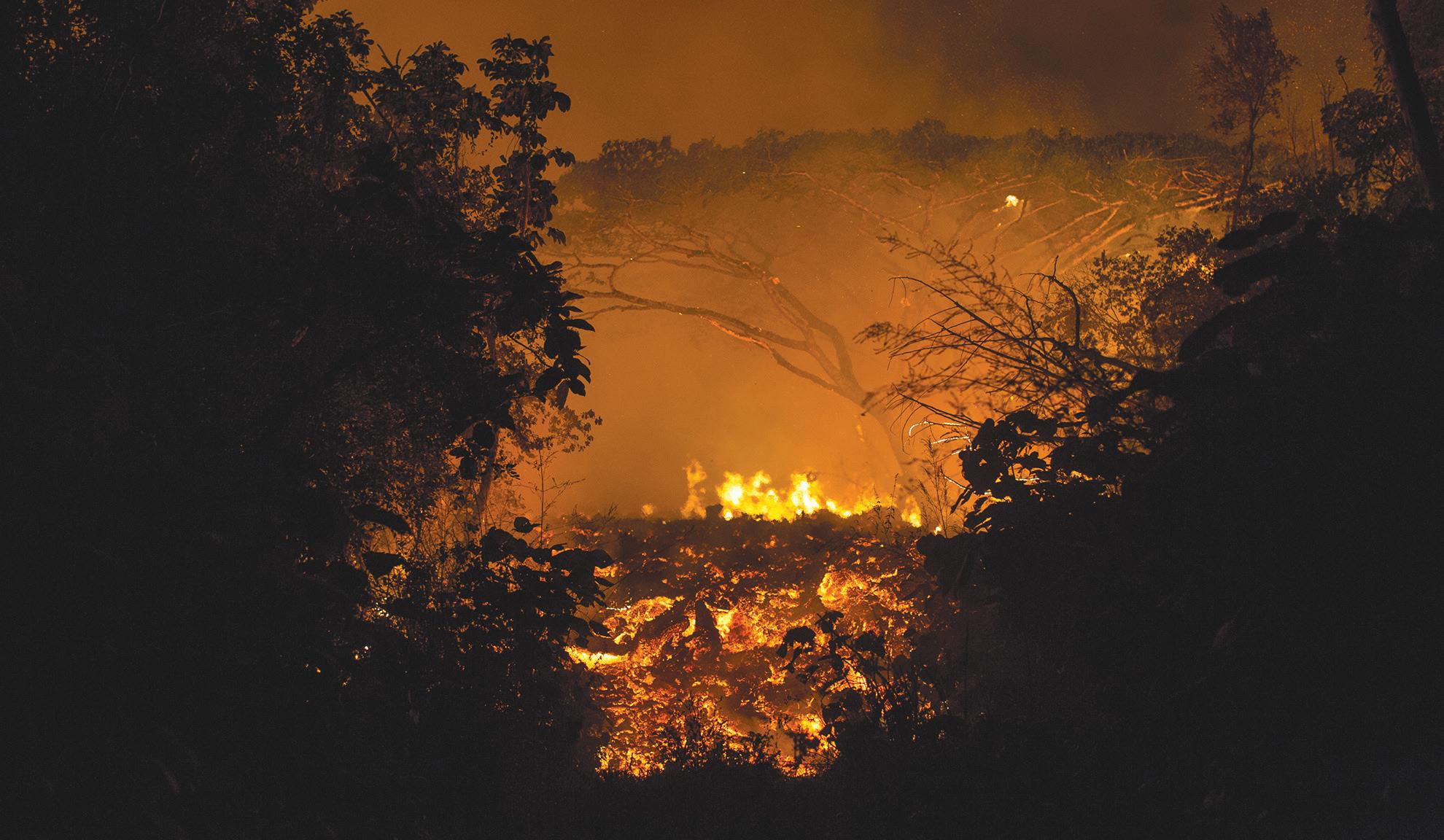
According to Dayton, studying carbon dioxide inclusions is a faster and more accurate method. Previously, researchers studied fluid inclusions using xenoliths, fragments of mantle or crust brought up with the eruption.
The Gazel Group modified this approach as well.
“[W]e targeted crystals directly from the magma to get an idea of where the magma actually is,” Dayton said.
The process of physically identifying these inclusions is complex and requires a considerable level of expertise. The research group adopted a method called Raman spectroscopy — a setup using lasers and detectors — that yields accurate results without significant manual intervention.
“What was unique about our paper is that we used a technique called Raman spectroscopy,” Dayton said. “This allows us to measure smaller inclusions very accurately and much faster.”
The use of a standardized method like Raman spectroscopy allows for increased accessibility to other research-
ers around the world. By determining the structure of carbon dioxide molecules in the magma crystals, the spectroscope helps determine the density of the fluid inside the crystals.
For the La Palma eruption, the group deduced that the crystals started shallower and then became deeper as the magma chamber emptied over the course of the twomonth eruption. This data is highly specific to the volcano the samples were taken from, but it can convey a lot of
information about the activity within the volcano.
For example, researchers could be aware that magma is stored approximately seven kilometers under the surface. If the tremors causing an earthquake in the region are recorded at one to three kilometers beneath the ground, they should not be a major cause for concern, as they are not located near the magma.
This technique can not only be applied to hotspot volcanoes like the Canary Islands, but also arc volcanoes
like those found in Indonesia. Ultimately, the results of this study demonstrate significant potential for further research in this area.
“A global study of fluid inclusions of different volcanic settings around the world could provide us with information about past magma storage so that we can get an idea of how these systems have evolved over time,” Dayton said.
Aditya Syam can be reached at asyam@cornellsun.com.
Cornell Researchers Explore Future of Quantum Information
By DANIELLA GARCIA ALMEIDA
Sun Staff Writer
Dario Gill, Senior Vice President and Director of Research for International Business Machines, came to Cornell University to give the Spring 2023 Colloquium, “What’s Next in Quantum Computing,” on Feb. 7.

Coined in the 1980’s by Prof. Richard Feynman, physics, quantum computing is one of the areas of application from quantum information science — a relatively
new field that combines the theory of quantum mechanics, the study of physics at the scale of atoms or smaller, with information science.
Quantum information science has many potential applications in areas such as cryptography, the way in which computers keep information safe.
IBM has been working on building quantum computers that are more robust and user-friendly by increasing the amount of quantum bits in the processor and improving hardware efficiency. The
company has also made its quantum computers available to the public through Qiskit, an open-source development kit.
Qiskit allows researchers and developers to experiment with quantum computing by testing code without having to build their own quantum computers.
In his talk, Gill discussed the future of quantum computing and the field’s intersection with classical computing and machine learning.
“If I were to summarize it very briefly, I would say that
what’s next in computing is this idea of bits plus neurons plus qubits coming together,” Gill said in the talk. “The convergence of these areas is going to be the basis of the next computing architecture that is going to touch every aspect of our life.”
Bits are units of data used in classical computing that can only have values of 0 or 1, while quantum bits, or qubits, are units of quantum information that can be linear combinations of 0 and 1. These units of data provide the foundation for computing and information science.
Gill emphasized that quantum computing is not just a faster version of classical computing; instead, it represents a new category of computing that is expanding and moving forward by specializing in problems like protein folding.
“[Classical computers and quantum computers are] going to work in concert,” Gill said. “They’re going to be complementary to one another.”
Cornell has been a hub for groundbreaking research in quantum information science, with Prof. Gregory Fuchs, applied engineering physics, being one of the leading researchers.
“[The University] has really been enjoying a very exciting explosion in quantum information research over the past couple of years,” Fuchs said. “There has been an initiative on campus to really identify quantum information sciences as a priority area for research.”
Fuchs noted that Cornell has experienced significant growth in quantum information research over the past few years.
“There’s an active interest in hiring, and bringing new people in lots of different areas and lots of different research interests to help continue to develop this community,” Fuchs said.
The University has also introduced new courses to enable students to learn about quantum information science. One of the first classes, Computer Science 4812: Quantum Information Processing, was developed by Emeritus Prof. David Mermin, physics. A similar course is now offered at an advanced level, taught by Prof. Paul Ginsparg, physics and information science.
Quantum computing classes that Cornell currently offers include Applied Engineering and Physics 2550: Engineering Quantum
Information Hardware, Applied Engineering and Physics 3100: Introductory Quantum Computing — which is a new class on quantum information science with a focus on algorithms — and Electrical Computer Engineering 6960: Special Topics in Electrical and Computer Engineering, a class on quantum information theory.
“These [classes] have only been made available within the last couple of years. Some of them are being taught for the first time this semester,” Fuchs said.
Many professors at Cornell research quantum information — such as Fuchs, whose group has a long history of undergraduate research in quantum information and condensed matter physics. Cornell’s quantum theorists and experimentalists explore a variety of additional quantum topics, such as superconducting circuits, optics, color center-based qubits and trapped ions.
“It’s really an exciting time for a student to learn about quantum information sciences, ” Fuchs said.
8 The Cornell Daily Sun | Tursday, March 2, 2023 Science
Daniella Garcia Almeida can be reached at dg573@cornell.
Quantum quandaries | The IBM Director of Research showcased the future and advancement of quantum computing and quantum information science at Cornell.
COURTESY OF MISHA FRIEDMAN
TAMIR KALIFA / THE NEW YORK TIMES
Erratic erruptions | New methods developed at Cornell to determine magma depth may help scientists more accuriately predict future volcanic erruptions all over the world.






















































